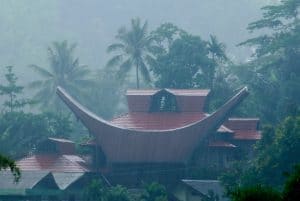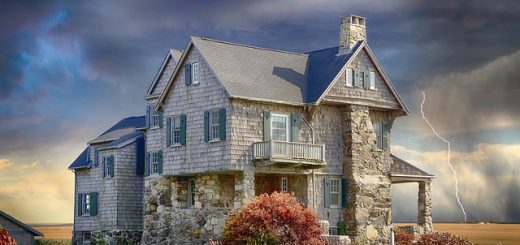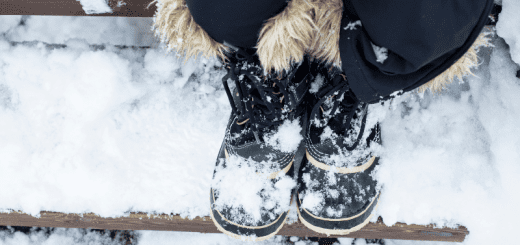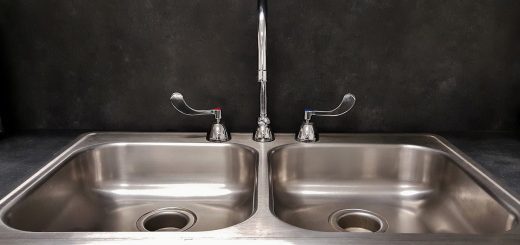Nor’easter Expected to Hit New York City Area: How to Prepare and Stay Safe
The New York City locale is fraught with Nor’easters. Residents are urged to prepare for the expected blasts of wind and rain. Staying safe is a result of adequate preparationPreparation is the steps taken to ready a property, equipmen... More. New Yorkers can follow a few safety tips in preparationPreparation is the steps taken to ready a property, equipmen... More for the gusty, wet nor’easter season.
What is a nor’easter?
Winds that blow from the northeast are familiarly known as nor’easters. An area of low pressure along the East Coast gives rise to strong winds from the northeast. Nor’easters usually make their way up and down the East Coast. Coastal cities, like New York City, are especially vulnerable.
Nor’easters are fueled by temperature differences, specifically when the cold air over the East Coast collides with the warm air above the Atlantic Ocean. Initially developing approximately 100 miles east or west of the East Coast, Nor’easters intensify around New England or Canada.
When do nor’easters occur?

Residents are urged to prepare for the expected blasts of wind and rain.
Any time of year is fair game for nor’easters. Typically, however, nor’easters are strongest and reach their peak frequency during the months of September through April. Nor’easters often occur in winter and are associated with winter storms. Nor’easters, like those in April, may produce rain instead of snow.
What type of damage do nor’easters cause?
Widespread floodingFlooding is the overflow or accumulation of water in areas t... More is a common consequence of nor’easters. Ocean waves can reach heights of 11 feet, causing massive destruction to coastal properties. Trees may be uprooted; wind gusts near the coast can reach 60 mph and take down power lines—power outages result. Slippery roads also make driving dangerous.
Are weather alerts issued to warn of nor’easters?
Given the dire effects of nor’easters, New Yorkers are strongly encouraged to stay up to date on alerts from the National Weather Service. Winter Storm Watches and Warnings are issued when severe nor’easters are expected to hit New York City and other East Coast cities.
Government-issued toll-free hotlines provide timely information regarding upcoming nor’easters. Updates include restorationRestoration is the process of returning a property to its pr... More times for power outages, weather stats for the area and locations of shelters. Motorists may use free services, like the 511NY app, to check road conditions prior to driving.
How do New Yorkers secure a property?
Nor’easters bring massive wind gusts and torrential rains. Board up windows or adhere duct tape across them to stop the glass from shattering. Prevent leaks and water damage by keeping the windows and doors closed and watertight. Remove air conditioners in window sills so the windows can be fully closed.
New York City residents may have minimal property located outside their homes. However, high-rise apartment dwellers who house belongings on a balcony should bring everything indoors. Property outside, such as plants and patio furniture, serve as projectile missiles when high winds strike.
How do New Yorkers prepare for power outages?
If power outages occur due to nor’easters, New York City residents should contact the Department of Public Service anytime, 24 hours a day. Disruptions to power are expected to be minimal, as the department is prepared to respond quickly to forecasted nor’easters, which are closely monitored.
In advance of the nor’easter, New Yorkers should also keep cash on hand and fill their gas tanks. A stock of batteries and a flashlight also help when power is lost.
Keep ice in the freezer to ensure food stays cold. The Red Cross notes that fridges keep food chilled and consumable for four hours and freezers for up to 48 hours. Officials recommend keeping at least three days’ worth of nonperishable food items and drinking water available.
Prepare and keep on hand a first aid kit to address any minor injuries, due to broken windows, for instance, that occur during nor’easter conditions.
How do New Yorkers stay safe on the road?
Nor’easter conditions can make driving risky. The wet roads are dangerously slick, and floodingFlooding is the overflow or accumulation of water in areas t... More can make roads impassable. If possible, stay off the roads until the floodingFlooding is the overflow or accumulation of water in areas t... More lessens. Weather conditions are known to change rapidly, potentially leaving motorists stranded if they drive on unsafe roadways.
Are the indoors safe during a nor’easter?
New Yorkers’ safest bet is to stay indoors during a nor’easter. Parks, playgrounds and beaches are likely to close if the nor’easter is severe enough. Rampant winds increase the chances of falling trees and flying debris. Reduce the chances of injury from airborne rubble by staying inside during the storm.
Nor’easters bring high winds and rain to New York City. When expected nor’easters are around the corner, prepare for the worst by keeping handy the contact information of a reputable storm and flood damage restoration service. These professionals provide emergency restorationRestoration is the process of returning a property to its pr... More services to residential homes and commercial properties destroyed by storms.
Professional flood damage restorationRestoration is the process of returning a property to its pr... More services start with an immediate response—within one to two hours of your call. The standing water that resulted from the nor’easter or any other damaging event is quickly removed with advanced water extraction equipment. Upon removal of the excess water, a thorough dehumidificationDehumidification is the process of reducing and controlling ... More process is initiated. Sterilization of the property destroys all waterborne bacteria and ensures your home or business is safe to occupy once again.
While water damage can occur as a result of nor’easters, household plumbing leaks or many other natural or manmade causes, storm damage is typically caused by high winds. Major gusts pull at a property’s siding and uproot trees, causing significant ruin. RestorationRestoration is the process of returning a property to its pr... More professionals provide full-scale storm damage restoration services that restore your property to its pre-damaged state.












